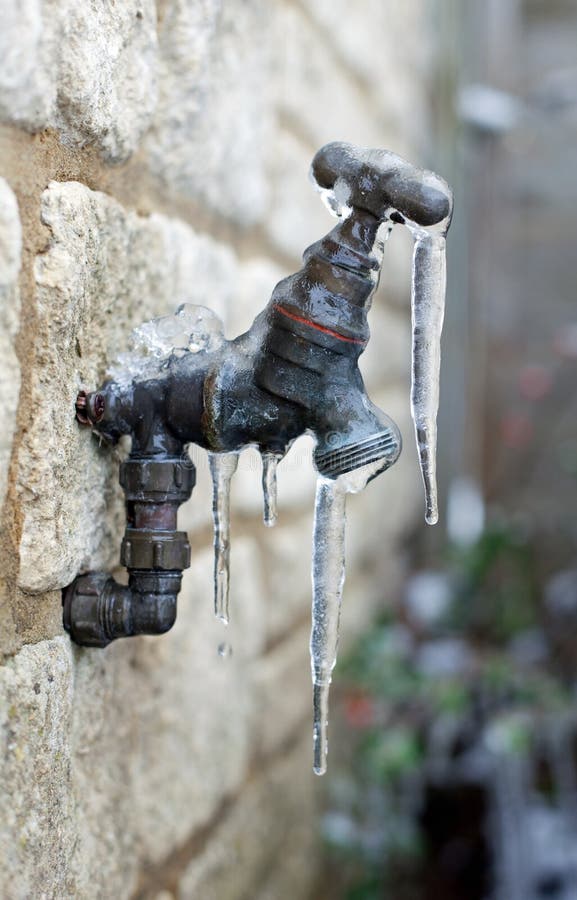Advice for Preventing Frozen Plumbing in Cold Weather: Professional Advice
Advice for Preventing Frozen Plumbing in Cold Weather: Professional Advice
Blog Article
Any individual seems to have their unique piece of advice involving 6 Ways to Prevent Frozen Pipes.

Winter can damage your pipes, specifically by freezing pipes. Right here's how to prevent it from happening and what to do if it does.
Introduction
As temperatures decrease, the danger of frozen pipelines increases, potentially resulting in costly repair work and water damages. Understanding just how to prevent icy pipelines is vital for property owners in cool climates.
Prevention Tips
Protecting at risk pipes
Wrap pipelines in insulation sleeves or use warm tape to shield them from freezing temperatures. Focus on pipes in unheated or external locations of the home.
Heating techniques
Keep indoor spaces adequately warmed, especially areas with plumbing. Open up closet doors to allow warm air to distribute around pipelines under sinks.
Exactly how to recognize frozen pipelines
Seek reduced water circulation from taps, unusual odors or sounds from pipelines, and noticeable frost on revealed pipelines.
Long-Term Solutions
Structural changes
Take into consideration rerouting pipelines far from exterior walls or unheated locations. Include additional insulation to attics, cellars, and crawl spaces.
Updating insulation
Purchase top notch insulation for pipelines, attics, and wall surfaces. Appropriate insulation helps keep constant temperature levels and minimizes the risk of icy pipes.
Shielding Outdoor Plumbing
Yard hose pipes and exterior faucets
Separate and drain garden tubes before winter months. Install frost-proof faucets or cover exterior faucets with shielded caps.
Recognizing Frozen Pipes
What triggers pipes to ice up?
Pipes ice up when subjected to temperature levels listed below 32 ° F (0 ° C) for prolonged durations. As water inside the pipes freezes, it broadens, taxing the pipe walls and possibly triggering them to break.
Threats and problems
Icy pipes can result in water supply disturbances, residential property damages, and expensive repair services. Ruptured pipelines can flood homes and trigger substantial architectural damages.
Indicators of Frozen Pipeline
Determining frozen pipes early can prevent them from rupturing.
What to Do If Your Pipes Freeze
Immediate activities to take
If you suspect icy pipelines, keep faucets open up to eliminate pressure as the ice thaws. Make use of a hairdryer or towels taken in hot water to thaw pipes slowly.
Verdict
Stopping icy pipelines calls for aggressive procedures and fast feedbacks. By recognizing the causes, indicators, and preventive measures, house owners can safeguard their plumbing throughout winter.
5 Ways to Prevent Frozen Pipes
Drain Outdoor Faucets and Disconnect Hoses
First, close the shut-off valve that controls the flow of water in the pipe to your outdoor faucet. Then, head outside to disconnect and drain your hose and open the outdoor faucet to allow the water to completely drain out of the line. Turn off the faucet when done. Finally, head back to the shut-off valve and drain the remaining water inside the pipe into a bucket or container. Additionally, if you have a home irrigation system, you should consider hiring an expert to clear the system of water each year.
Insulate Pipes
One of the best and most cost-effective methods for preventing frozen water pipes is to wrap your pipes with insulation. This is especially important for areas in your home that aren’t exposed to heat, such as an attic. We suggest using foam sleeves, which can typically be found at your local hardware store.
Keep Heat Running at 65
Your pipes are located inside your walls, and the temperature there is much colder than the rest of the house. To prevent your pipes from freezing, The Insurance Information Institute suggests that you keep your home heated to at least 65 degrees, even when traveling. You may want to invest in smart devices that can keep an eye on the temperature in your home while you’re away.
Leave Water Dripping
Moving water — even a small trickle — can prevent ice from forming inside your pipes. When freezing temps are imminent, start a drip of water from all faucets that serve exposed pipes. Leaving a few faucets running will also help relieve pressure inside the pipes and help prevent a rupture if the water inside freezes.
Open Cupboard Doors
Warm your kitchen and bathroom pipes by opening cupboards and vanities. You should also leave your interior doors ajar to help warm air circulate evenly throughout your home.

We were shown that report about How To Avoid Freezing Pipes through someone on our other web page. You should pause to distribute this post if you enjoyed it. I am grateful for your time. Revisit us soon.
Book An Appointment Report this page